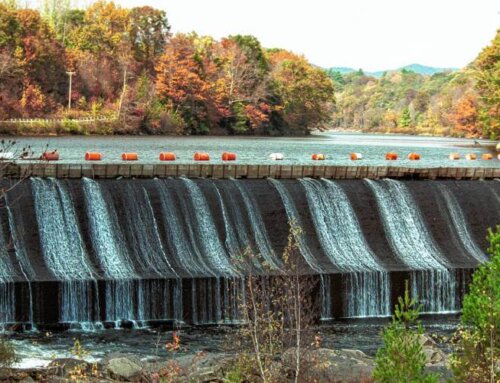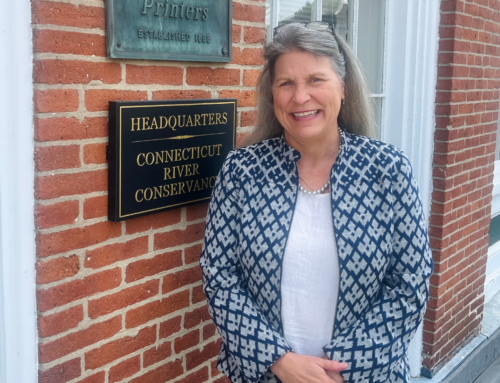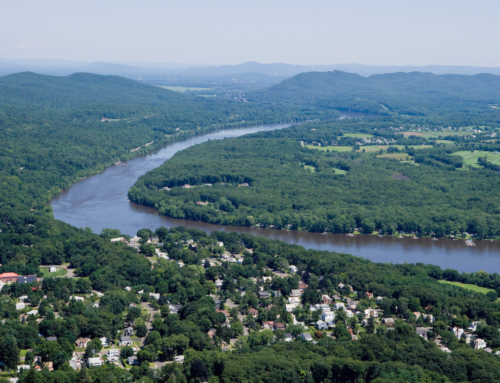FOR IMMEDIATE RELEASE
CONTACT:
Andrew Fisk, CRC Executive Director – afisk@ctriver.org 413-772-2020 x208
Andrea Donlon, CRC River Steward (MA) – adonlon@ctriver.org 413-772-2020 x205 (forwards to cell)
Kathy Urffer, CRC River Steward (NH & VT) – kurffer@ctriver.org 413-772-2020 x215
Connecticut River Conservancy responds to five final hydropower license applications
that will shape the future of the Connecticut River for generations
Greenfield, MA – Since 2013, five hydroelectric facilities on the Connecticut River have been going through a relicensing process to secure new, updated operating licenses. These licenses will endure for the next 30-50 years and impact hundreds of miles of the Connecticut River. The relicensing process has reached a new milestone – final license applications have been released. Connecticut River Conservancy (CRC) and partners have worked tirelessly to ensure these new licenses reflect current river science and uphold current environmental laws to ensure the best deal for rivers and river communities.
“This is not a done deal yet,” notes Andrew Fisk, CRC executive director. “The release of these final license applications is just the beginning of the final phase of this process. We urge people to join us in speaking up for their rivers and river communities over the coming months. It’s important that we all continue pushing these companies to do what’s right for the rivers they rely on to produce energy and profits, the rivers that belong to the public.”
The current expired licenses allowed these facilities to operate in a “peaking” manner, which holds water in a reservoir to be released to create energy at strategic times of high demand and/or high energy prices. This process has created many problems including riverbank erosion, inconsistent water levels and flows, putting endangered wildlife at risk, and more. Additionally, these facilities should be doing more to improve recreational resources, protect cultural and historical resources, and improve fish passage. FirstLight, owner of the Turners Falls Dam and Northfield Mountain Pump Storage in Massachusetts, released their final applications Friday and Great River Hydro, owner of the Wilder, Bellows Falls, and Vernon Dams in Vermont and New Hampshire, released their applications Monday.
FIRSTLIGHT
CRC participated as a stakeholder for two years in settlement negotiations with FirstLight. After making some progress, the negotiations stalled and any meaningful engagement with FirstLight ended years ago. CRC encourages FirstLight to meaningfully engage with all river stakeholders, be transparent in what they are proposing for their operations, and not engage in legal maneuvers to avoid their responsibility to the river and river communities.
CRC is pleased that FirstLight is addressing what science has told us for years by proposing to build a Holyoke-style fish lift at the Turners Falls dam to improve decades of inadequate fish passage, and they will be putting more water (amount varies by season) into the river channel below the dam. Additionally, slower fluctuations in turbine operations will allow more “natural” river flows to protect endangered and threatened species.
CRC is disappointed that FirstLight offers nothing to minimize or fix erosion that has been a huge issue since Northfield Mountain Pump Storage began operating in 1972.
While the company will maintain existing recreational offerings, they propose only meager additions of three paddling put-ins and a renovation of an access spot that has needed work for the past 20 years. CRC expects the company to invest significantly in resources for recreation patterns through 2070.
FirstLight continues to downplay the amount of revenue they make and highlight expected losses in generation or costs to build enhancements, many of which are the cost of doing business, like dredging the upper reservoir and moving the Riverview boat dock to accommodate the proposed Northfield barrier net.
GREAT RIVER HYDRO
CRC was invited to participate in a productive discussion with Great River Hydro and other stakeholders about potential alternative operations. This collaboration yielded positive results for the river including operational changes that reduce peaking operations and will allow the river flow into the facilities to equal the outflow, thereby returning the river to a much more natural flow at the three facilities much of the time. This change is expected to improve aquatic habitat for all aquatic life, particularly rare and endangered species; maintain minimum flow requirements to support resources and uses downstream during low flow conditions; and provide a more stable water level above the dams, which should reduce erosion on upstream properties and shorelands.
While CRC is pleased with Great River Hydro’s willingness to collaborate transparently and effectively on this significant change to operations, CRC expects and the public deserves more comprehensive enhancements for recreational and cultural considerations in the license, safe and effective fish passage, as well as monitoring to ensure that operational changes will indeed reduce erosion issues in the upper end of the impoundments.
NEXT STEPS
The Federal Energy Regulatory Commission (FERC) has not yet posted a notice for comments and interventions, which CRC expects to come out later this winter or spring.
CRC encourages the public to get involved in this once-in-a-lifetime opportunity to influence these operating licenses. More details to come about when and how you can join CRC to speak up over the coming months. Sign up for CRC emails at ctriver.org or follow them on social media to get updates.
Meanwhile, CRC will be submitting extensive formal comments on these applications to address issues such as minimum flows, upstream and downstream fish passage, recreational access and resources for river communities and the public, historic and native cultural sites, and advocating for ongoing streambank monitoring and mitigation funds to address erosion.
Additional Resources:
- Full License Applications submitted to the Federal Energy Regulatory Commission (FERC):
-
- Great River Hydro: https://www.greatriverhydro-relicensing.com/overview/documents/ Open “Final Licensing Application” folder. Most information is in “Exhibit E.”
- FirstLight: http://www.northfieldrelicensing.com/Pages/Documents2020.aspx Executive Summary Table ES-1 shows inflated cost amounts that include a hidden expected energy revenue loss, whereas Exhibit D for the two facilities show lower costs. Otherwise, the Executive Summary is a concise summary of what the application package includes.
- CRC’s recreation recommendations submitted to FERC: https://elibrary.ferc.gov/eLibrary/idmws/file_list.asp?accession_num=20190730-5077
Since 1952, Connecticut River Conservancy has been the voice for the Connecticut River watershed, from source to sea. They collaborate with partners across four states to protect and advocate for your rivers and educate and engage communities. They bring people together to prevent pollution, improve habitat, and promote enjoyment of your river and its tributary streams. Healthy rivers support healthy economies. To learn more about CRC, or to make a contribution to help protect your rivers, visit ctriver.org.
###







